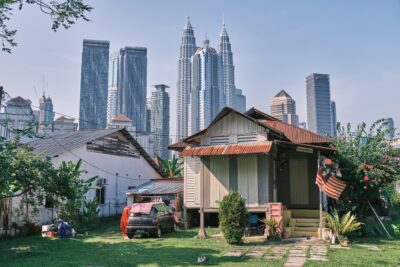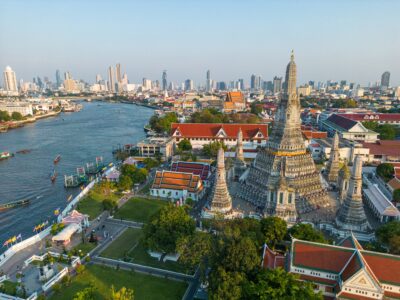The Spectacle by MGM Cotai: a record-breaking feat in architecture and design
Macau adds another capstone to its long list of world records and honorifics with The Spectacle, casino resort MGM Cotai’s tech-savvy, landscaped atrium space
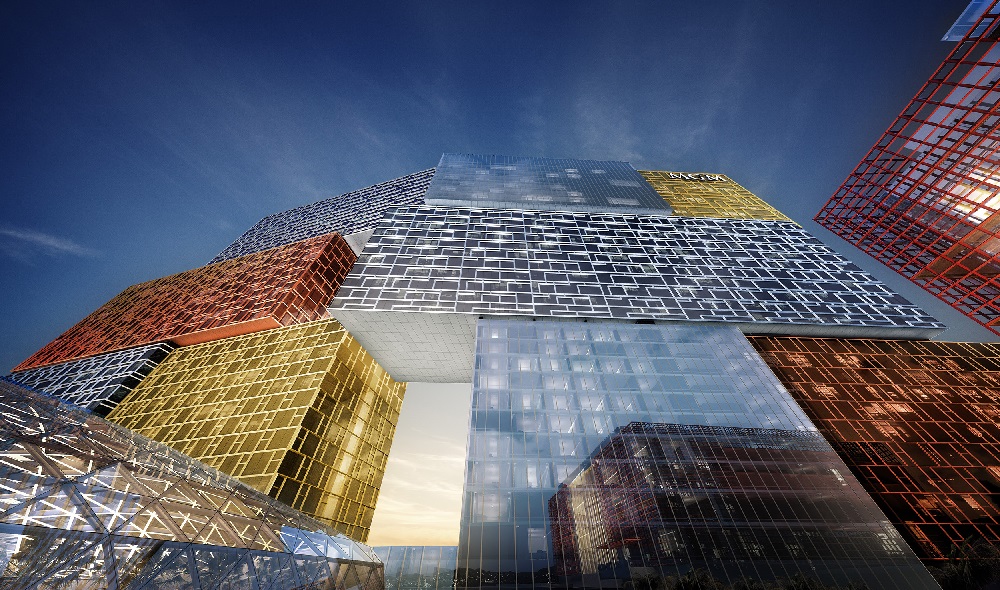
Macau has never been a stranger to superlatives.
The second richest territory on earth is the Las Vegas of Asia, but with three times the American city’s gambling revenue.
The one-time Portuguese territory is also linked to Hong Kong and the Chinese city of Zhuhai by the world’s longest bridge over water, which opened in October. It birthed the world’s first fusion cuisine and holds the highest commercial bungee jump facility on earth.
In January 2019, the Guinness World Records proclaimed the self-supporting, free-span grid shell glazed roof over The Spectacle—a USD37 million atrium space at casino resort MGM Cotai—as the world’s largest. It is the latest in a long line of firsts and superlatives at the USD3.4 billion property opened by MGM China Holdings Limited property last year.
This is neither MGM China’s first rodeo with the world record database—nor its first lion dance. MGM Cotai’s sister property, MGM Grand Macau (China), had snatched the Guinness twice for The
Winston, a MOP94,880 (USD11,777) cocktail, and a 113.3-kilogram dancing lion.
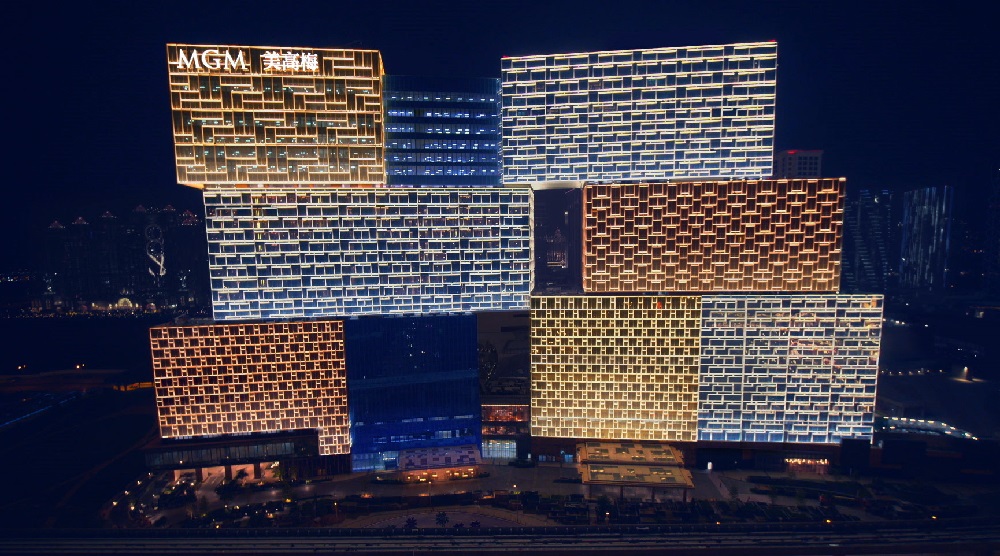
“When we conceptualise about MGM Cotai, we want to make it a new ‘go-to’ attraction for Macau, to create something more innovative, bigger, and more appealing,” says Grant Bowie, the company’s chief executive officer and executive director.
Siu Yin Wai & Associates Limited (Hong Kong), the structural engineer behind The Spectacle, helped to apply for the Guinness record. The certification came as a surprise to Shawn Duffy, principal at New York-headquartered architecture firm Kohn Pedersen Fox Associates (KPF), which worked with British design firm Arup on the structural concept and geometry of The Spectacle. “We had no idea how big it was compared to anything else. It was a complete after-the-fact sort of thing,” recalls Duffy. “It was a nice sort of bonus, but it wasn’t our goal at all.”
MGM China roped KPF in as early as 2011 to work on The Spectacle, located on their property at the Avenida da Nave Desportiva in the reclaimed Cotai Strip off the Macau peninsula. “From the very beginning, MGM said, ‘We really want to have no columns.’ Is that all possible? That’s what led to this design of the shell structure,” reveals Duffy.
A traditional roof structure would not have worked for the designers. The beauty of the shell structure is that the structure itself is extremely thin and is actually what supports the roof glass. It’s the only one system that is doing everything
The upshot was a diagrid glass canopy undulating 8,073.1 square metres or 30 tennis courts above MGM Cotai’s atrium space. It was, as Pansy Ho, co-chairperson at MGM China Holdings Limited described, a “seemingly impossible architectural feat.”
The diagrid shell structure is both an ode to great rooftops around the world, such as the Great Court at the British Museum, and a practical decision: any other structure would have needed either lots of columns or height.
“A traditional roof structure would not have worked for the designers,” explains Duffy. “It has trusses running across, and then you have to put another layer of structure on top of that to create the roof. You get two layers, and it starts to get really thick. If we went with a traditional structure of trusses, it would start to look very odd because the trusses would be all different lengths.
“The beauty of the shell structure is that the structure itself is extremely thin, and is actually what supports the roof glass. It’s the only one system that is doing everything.”
The highest point of The Spectacle is 29.5 metres above the floor, by KPF estimates. Arup generated the 3D geometry of the steel diagrid shell using dynamic relaxation software and an iterative sizing algorithm, minimising the weight of the components like the high-performing laminated glass, steel I-beams, and structural members.
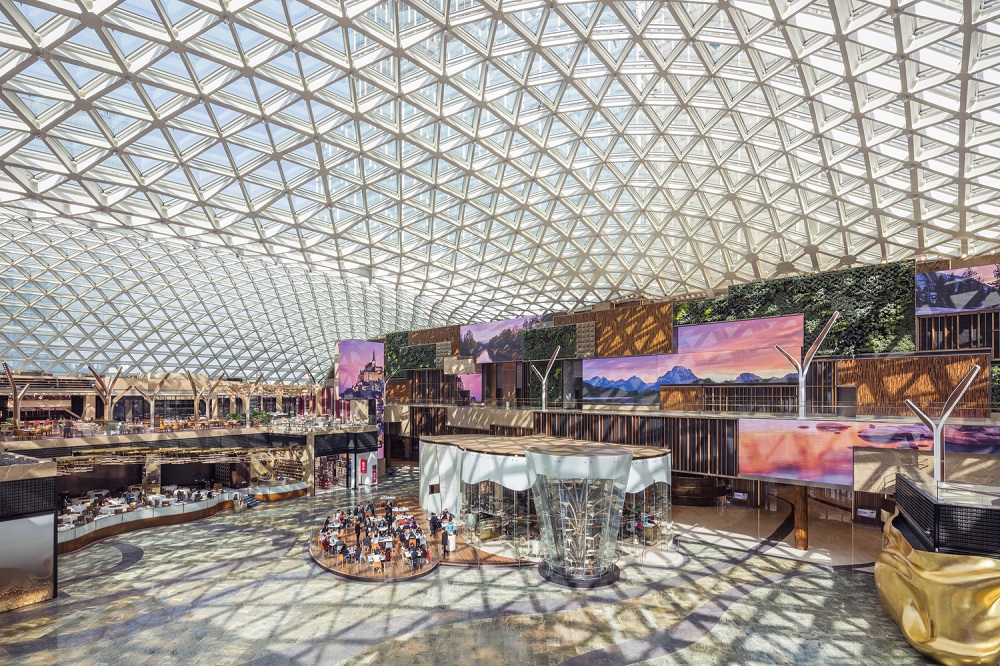
“A roof like this needs to be as light as possible,” says Duffy. “The software and iterative algorithms were able to go back and resize all the elements so that they were the optimum size. If you look closely, every node or piece of the roof is different. It is only as big as it needs to be.”
Triangular pieces of glass, each weighing 600 kilograms and with the exact same dimensions, are slotted into these nodes by workers from above. Each rest on three points that are different in space for every node. The free-forming triangulated steel canopy comprises around 1,600 of these nodes, all welded together to form a grid shell.
All that load from the glass was intentional, according to Duffy. “It was designed so that once the glass was installed, the roof would settle down into the actual ideal position it needed to be in. When they build the structure, you can imagine it was higher than it needed to be.”
Scaffolding had to be built directly below each and every node, so one could imagine a “forest” of temporary structures during construction, Duffy recalls. “Workers had to be very accurate to like almost a millimetre to build the little platform in space for each one of these 1,600 nodes and then place the structure on top of one of each of these nodes and start to weld it all together.”
More: A leading Singapore architect shares his designs for life
From the rooms at MGM Cotai, the roof appears to flow and just lie over the podium arch. “Some of those lower hotel rooms get this amazing landscape like frozen ocean waves, which is a nice and different thing to see,” says Duffy.
Those very waves allow The Spectacle canopy to stand on its own sans columns. Miraculously, the roof structure is supported only along its perimeter; on its east end, the roof abruptly drops vertically such that it becomes a façade. Compression rings give the roof its characteristic undulations, adding scale to the interiors.
“If you took the ring away, the roof would just completely flatten,” says Duffy. “Without the undulations, it wouldn’t be able to stand without a column. We broke the structure down into domes that rise up three times and drop down.”
The software and iterative sizing algorithm also ensured the roof’s resilience to typhoon winds for which Hong Kong and Macau are infamous. The canopy is able to resist the suction a typhoon creates to pull the roof up or push it in one direction or another.
By day, the roof serves as a larger-than-life skylight. Because of the concave nature of the roof, designers ensured the glass was not too reflective.
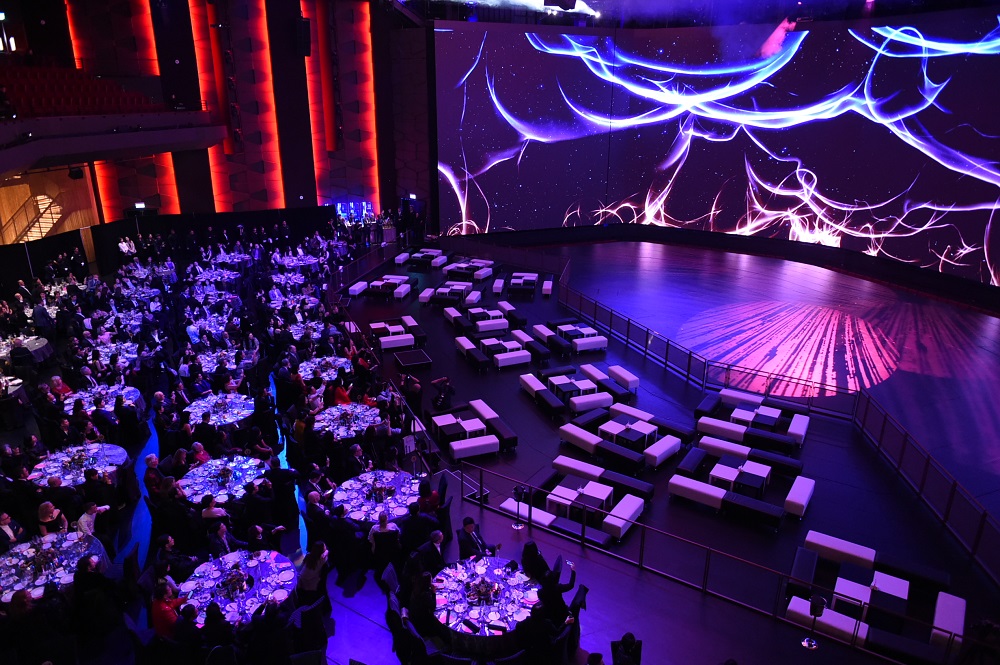
After dark, the spectacle begins.
The space has arguably the world’s largest area of indoor LED screens, some of which camouflage into the walls to look like stone or wood panelling. They then transform into painterly scenes of mountains and rivers.
A digital art attraction, Timeslice, captures and manipulates images such that people can be the subject of the art. Another innovation, You Are Art, lets people “become part of the content” as they move through space, Bowie notes. By no means, a Guinness record but MGM Cotai is currently home to more than 300 pieces of contemporary art. It holds one of Macau’s largest permanent art collections, including pieces by Xue Song, Liu Dan, Wang Jieyin, Ung Si Meng, Eric Fok, Chris Wood, and Chloe Ho.
LED lights, incorporated into the nodes, obviate the need to suspend massive lighting fixtures and illumine the atrium in a variety of colour patterns. Uplights are also located around the roof at low levels such that they can “change” the shell colour. “The only thing that’s really up there are the sprinklers,” Duffy says.
The idea from the get-go has always been to connect occupants of The Spectacle to nature via a “biophilic design approach,” says Ho. The Spectacle is host to an indoor vertical garden made of 100,000 plants across 2,000 species of flora.
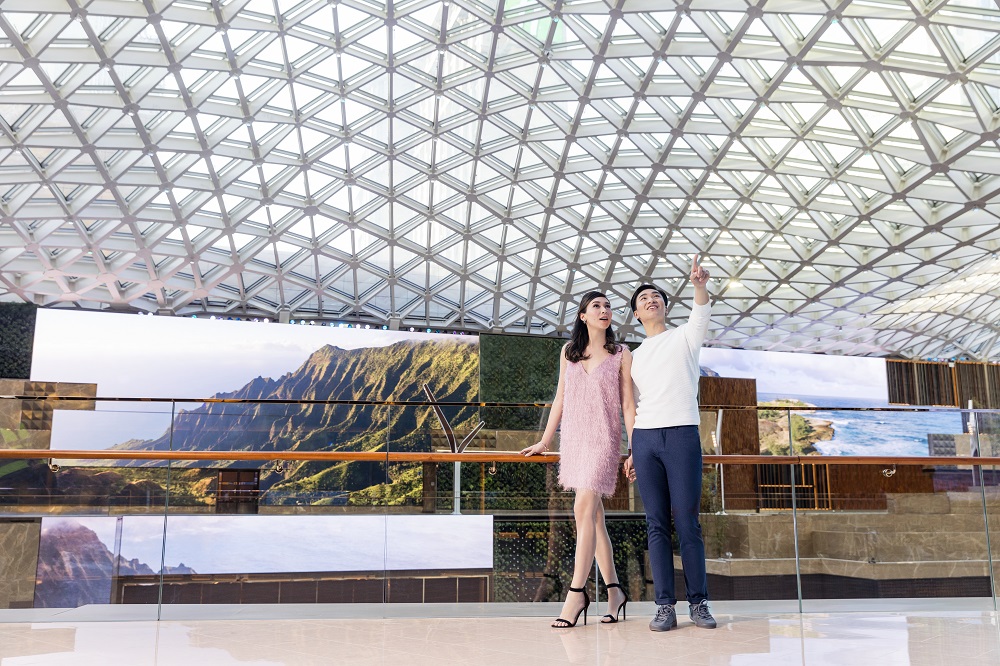
Jutting 35 floors above The Spectacle, the MGM Cotai hotel building is a cosmic Rorschach test. One can picture it as eight colossal boxes stacked on top of another, eight being a lucky number.
“We wanted people who saw the building from the outside to sort of see their own thing in the design rather than making something that looked exactly like we were hoping,” says Duffy. “Maybe somebody would look at it and see a mountain and another can look at it and see stacked jewel boxes.”
For Duffy, nothing compares to that first impression. MGM Cotai opened in February 2018 and went on to win a score of prizes, including the much-vaunted Asia Property Awards. “From the very beginning, the client wanted to make sure that when you get out of your car, it was an experience like nothing else,” he says. “To me, that is still my favourite part: when you pull up, get out, and lookup. I love that view of looking up at the towers and these boxes. That’s still my favourite thing.”
This article originally appeared in Issue No. 155 of PropertyGuru Property Report Magazine
Recommended
Meet the vagabond architect behind India’s housing scene
Vinu Daniel is helping to shake up India’s home building setting
Where Asian real estate stands in a fragmented, warmer world
Asia’s real estate industry faces many and varied challenges as external factors continue to bite
6 sights to see in Singapore’s Marine Parade
Handily located Marine Parade has emerged as a vibrant investment choice in the Lion City
There’s a township dedicated to health and wellness in Malaysia
Property seekers have their health needs catered for at KL Wellness City







